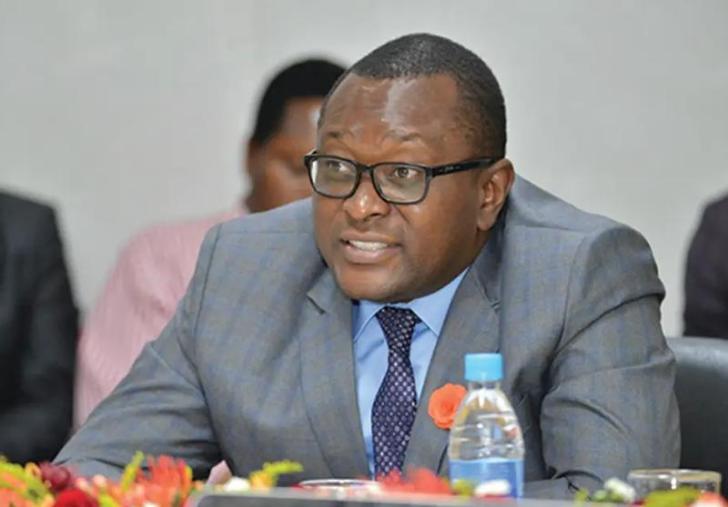News / National
ZiG4 billion required for digital migration
08 Nov 2024 at 06:56hrs |
0 Views

Zimbabwe requires an estimated ZiG4 billion to fully execute the second phase of its long-delayed digital migration project, known as Zim Digital, according to Dr. Jenfan Muswere, the Minister of Information, Publicity, and Broadcasting Services. Speaking at the 2025 National Budget pre-Budget seminar in Bulawayo, Dr. Muswere emphasized the need for urgent funding to modernize the country's broadcasting infrastructure and ensure national coverage, starting with border areas over the next two years.
"Our national objective is to ensure that no one and no place is left behind," said Dr. Muswere. "The Government will soon launch the Zim Digital phase two to make sure that the whole country is covered." He reported that of the ZiG194 million allocated to the project for 2024, 97 percent has already been utilized, but only half of the budgetary allocation has been released by the Treasury.
The Zim Digital project, which has been in progress since 2015 and is currently 40 percent complete, aligns with global standards set by the International Telecommunication Union (ITU). The ITU mandated in 2006 that countries transition from analogue to digital broadcasting by 2015, a target Zimbabwe is nine years behind in meeting. Currently, 18 transmitters have been installed, including the critical site in Kamativi, yet funding shortfalls and the COVID-19 pandemic have slowed the project significantly.
The lack of digital broadcasting services affects rural and border regions, leaving many communities dependent on foreign radio and television broadcasts. Areas like Bulilima in Matabeleland South have minimal access to Zimbabwean media, heightening the urgency of expanding Zim Digital to meet national demand.
The second phase of Zim Digital includes the installation of 160 more transmitters, an overhaul of the Zimbabwe Broadcasting Corporation (ZBC) studios, and updates to broadcasting infrastructure. Once completed, the project is expected to support Zimbabwe's Vision 2030 goals of becoming an upper-middle-income society by promoting informed citizenry and improved access to public information.
In collaboration with the Ministry of Information Communication Technology, Postal, and Courier Services, the Information Ministry has also developed a Digital Infrastructure Master Plan to guide implementation and ensure that digital migration is executed efficiently and with lasting impact.
Despite the Government's commitment, substantial funding gaps remain. "The finance envelope is around ZiG221 million, leaving a 95 percent gap," said Dr. Muswere, underscoring the need for expedited funding to fulfill Zimbabwe's Vision 2030 goals and provide equitable access to media and information across all regions.
"Our national objective is to ensure that no one and no place is left behind," said Dr. Muswere. "The Government will soon launch the Zim Digital phase two to make sure that the whole country is covered." He reported that of the ZiG194 million allocated to the project for 2024, 97 percent has already been utilized, but only half of the budgetary allocation has been released by the Treasury.
The Zim Digital project, which has been in progress since 2015 and is currently 40 percent complete, aligns with global standards set by the International Telecommunication Union (ITU). The ITU mandated in 2006 that countries transition from analogue to digital broadcasting by 2015, a target Zimbabwe is nine years behind in meeting. Currently, 18 transmitters have been installed, including the critical site in Kamativi, yet funding shortfalls and the COVID-19 pandemic have slowed the project significantly.
The second phase of Zim Digital includes the installation of 160 more transmitters, an overhaul of the Zimbabwe Broadcasting Corporation (ZBC) studios, and updates to broadcasting infrastructure. Once completed, the project is expected to support Zimbabwe's Vision 2030 goals of becoming an upper-middle-income society by promoting informed citizenry and improved access to public information.
In collaboration with the Ministry of Information Communication Technology, Postal, and Courier Services, the Information Ministry has also developed a Digital Infrastructure Master Plan to guide implementation and ensure that digital migration is executed efficiently and with lasting impact.
Despite the Government's commitment, substantial funding gaps remain. "The finance envelope is around ZiG221 million, leaving a 95 percent gap," said Dr. Muswere, underscoring the need for expedited funding to fulfill Zimbabwe's Vision 2030 goals and provide equitable access to media and information across all regions.
Source - The Herald
Join the discussion
Loading comments…























